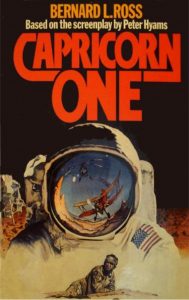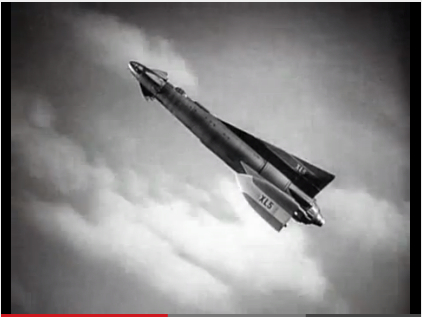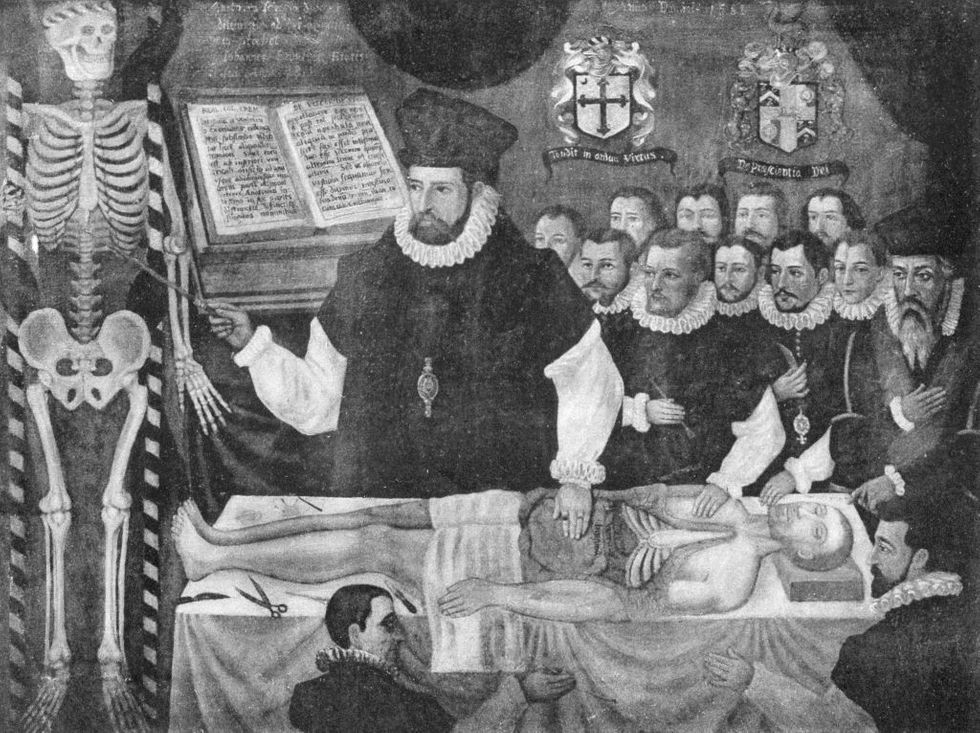When it comes to conspiracy theories, some of the most prolific stories in the science fiction genre are perhaps those concerning Area 51 and the existence of alien life. But not all government cover-ups need to be about little green men. Sometimes, those stories about man made treacheries can be even more disconcerting.
On June 2 1978, the Peter Hyams film Capricorn One hit theaters in the U.S. and audiences were introduced to a new kind of deception. With a cast including Elliott Gould, James Brolin, Sam Waterston and O.J. Simpson, the art (or deception) of special effects offered by Hollywood became the key element in the plot of the story.

Welsh author Ken Follett wrote a novelization of the film which was published in the United Kingdom under the pen name Bernard L. Ross. Another novelization of Capricorn One was written by Ron Goulart from Fawcett Gold Medal and was released the same year as the film in the United States. It’s interesting that two different authors wrote separate versions. The Goulart book is the work reviewed here, but the Ross version will now be added to my wish list.
Though a bit far-fetched at times, the plot follows the political and financial concerns of the space program when national interest is waning. The government has given NASA a short leash on the success of Capricorn One, the first manned spaceship mission to Mars. But there was a problem in latest testing of the ship’s life support, and any delay would bring an end to the mission as well as the future of the entire space program. If NASA is to survive, the mission must somehow still move forward – at any cost.
Just before the Saturn MB V rocket is to blast off into history, the three-man crew is taken from the capsule and whisked away to an abandoned hanger. Located at a secret air base, the trio learn of a soundstage where the surface of Mars has been recreated. Complete with the Landing Module standing on the rusty sand covered landscape, the astronauts are blackmailed (the safety of their families are at stake) into “acting” as if the mission is continuing as planned. But when the “real” spacecraft is destroyed during its return and all on board are assumed dead, the conspiracy takes a darker twist as the three astronauts try to escape, knowing they’ve now become loose ends that must be eliminated for the hoax to continue.
Though there are many prominent characters in the story, the obvious protagonist is a sarcastic news reporter named Robert Caulfield. When a friend who works at NASA suddenly disappears after noticing distinct time laps in the signals the control room is receiving from Capricorn One, Caulfield follows his instincts and predictably stumbles into the secret plot. His hunches are validated when some nasty goons in suits pay him a visit. The rest of the story becomes a classic cat and mouse chase as Caulfield tries to save the astronauts and break the conspiracy.

Goulart’s novel is a quick read at only 189 pages (Follett’s book is only about 30 pages more). Like many novelizations of films, the story has a lot of visual elements where the author is left with interpretations of the action as well as insight on the emotions of the characters. This author does a decent job of drawing on these roles to justify the flow of the story, but the complexity of the characters is lost in the fast pace and reads more like a gentler young adult story than the adult thriller it could have been.
If you’re consider the timing of the story, the intended audience would have consisted of a mixed bag of interested parties. Sure this can be said about almost any period in the modern era, but manned flights were at a lull and public interest was limited to the loyal believers in the space program and the fanatics of the romantic imagery of space exploration. With government spending being a political hot button, the legitimacy of a space program was and always will be a debatable issue.
Here are a few noted dates to help establish the mindset of when the story was published.
July 20, 1976 Viking 1 probe lands on surface of Mars
September 3, 1976 Viking 2 probe lands on surface of Mars
May 25, 1977 Star Wars: A New Hope released in theaters
August 20, 1977 Voyager 2 deep space probe launched from Cape Canaveral
September 5, 1977 Voyager 1 deep space probe launched from Cape Canaveral
1978 Capricorn One hit theaters and bookshelves
March 5, 1979 Voyager 1 transmits close-up images of Jupiter and its moons
April 12, 1981 Space Shuttle Columbia launches from Kennedy Space Center
It’s been a long time since we’ve been on the moon (December 1972 on Apollo 17). As we dream today of a possible manned mission to Mars, the imagery of a sound studio is inevitably going to creep into the minds of the doubters and probably those familiar with the film or books. Considering today’s headlines in space science, rediscovering the book definitely hit home when I found it on the shelf at the used book store.
The subject took me back to my early teens when we made our annual trek to southern Illinois to visit my grandparents. My grandmother was a very spiritual woman with some rigid opinions when it came to religion. The biggy being her unwavering belief that the world was flat. We all (there were a lot of us grandkids) sat around her wheelchair one evening and tried to debate the spherical structure of our little planet when she inevitably pulled the religion card on us. “The ‘Good Book’ mentions the four corners of the Earth. How can the world be round if it has four corners?” As unwinnable as this argument was in her eyes, we still gave it a shot by mentioning space flight and putting man on the Moon. Her simple reply was a calm, “It’s not real. The films of men on the moon are made in Hollywood, and naïve kids like you believe all of it.” Debate over.
When a work of fiction is able to make the audience think long and hard after it is watched or read, it becomes more than just a story. It becomes an experience. And if that work of fiction can reflect the audience’s personal experiences, it allows one to be drawn into the fantasy with added emotion and interest. Capricorn One by Ron Goulart may be a fun novelization of Peter Hyams film, but it is also a window into the mindset of many doubters who question man’s objectives in the world of space travel.
As we reach for Mars and the stars beyond, we better make sure the lighting is right.










